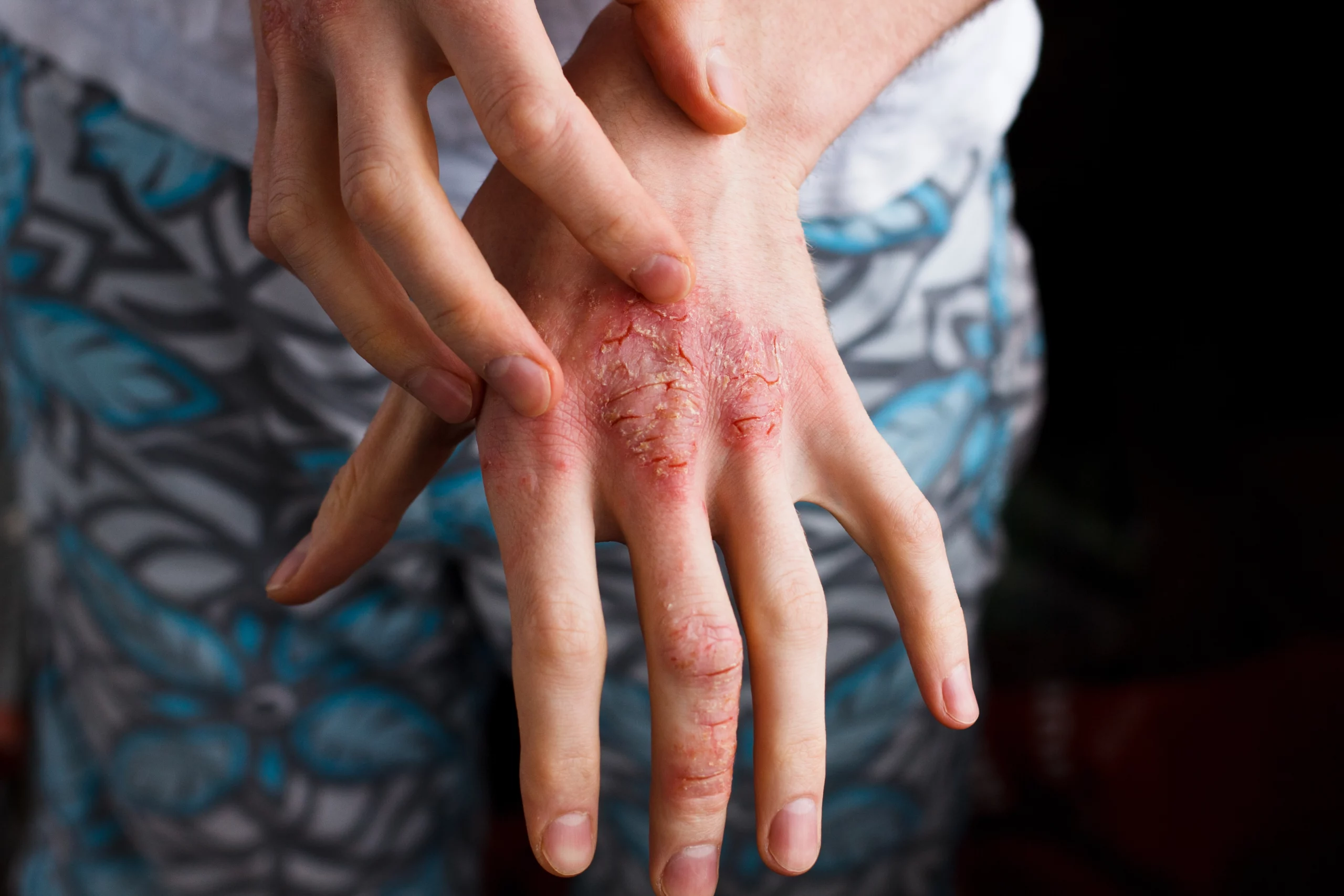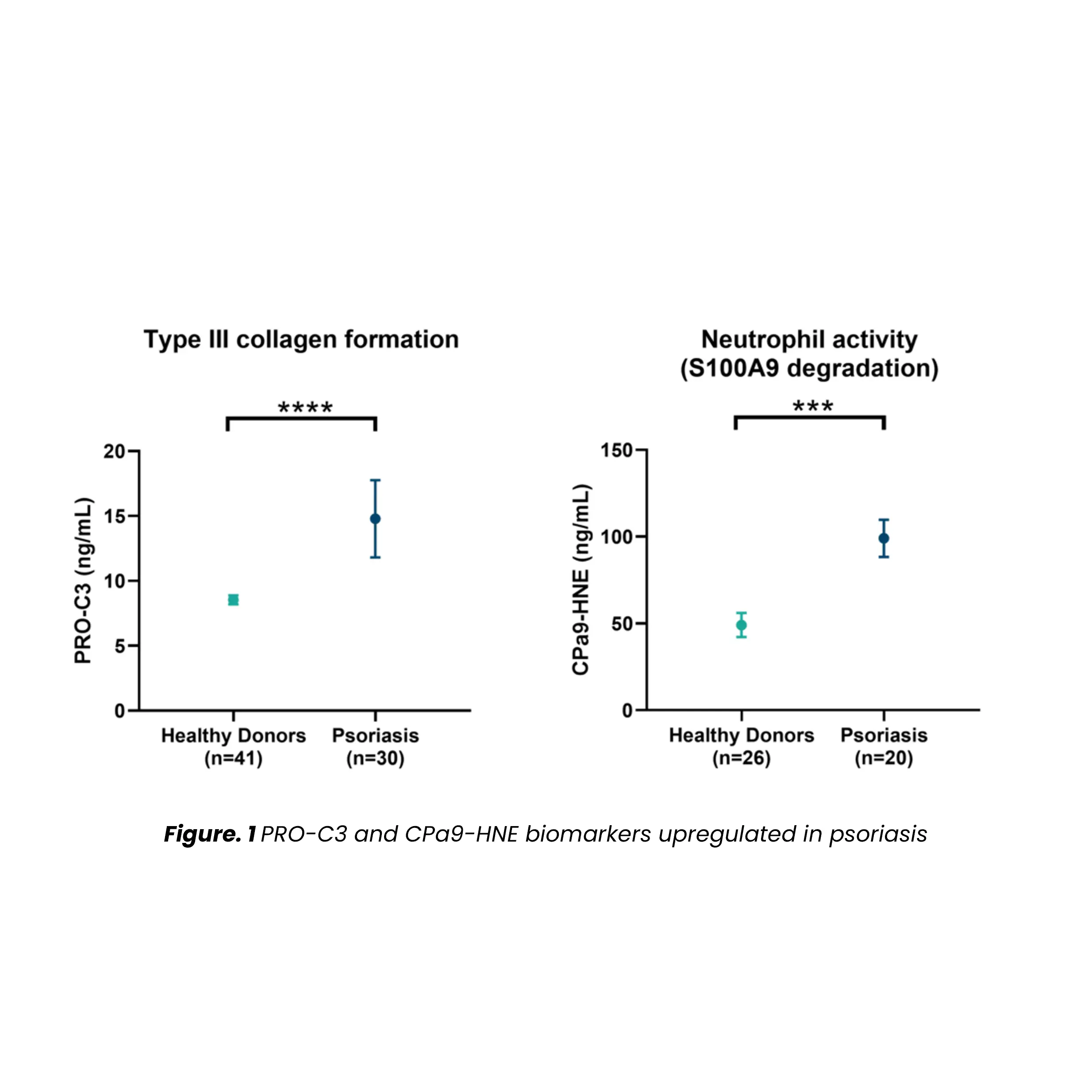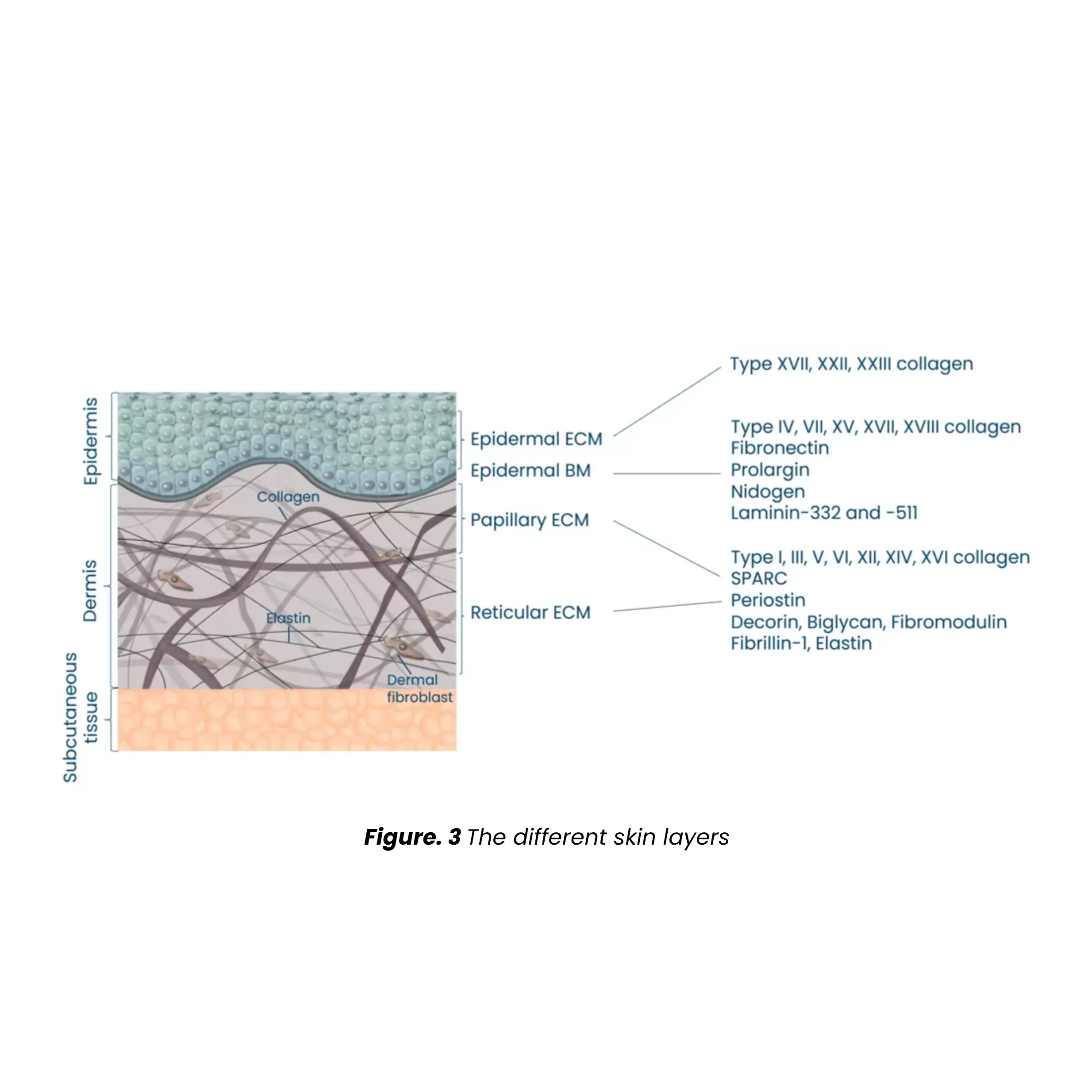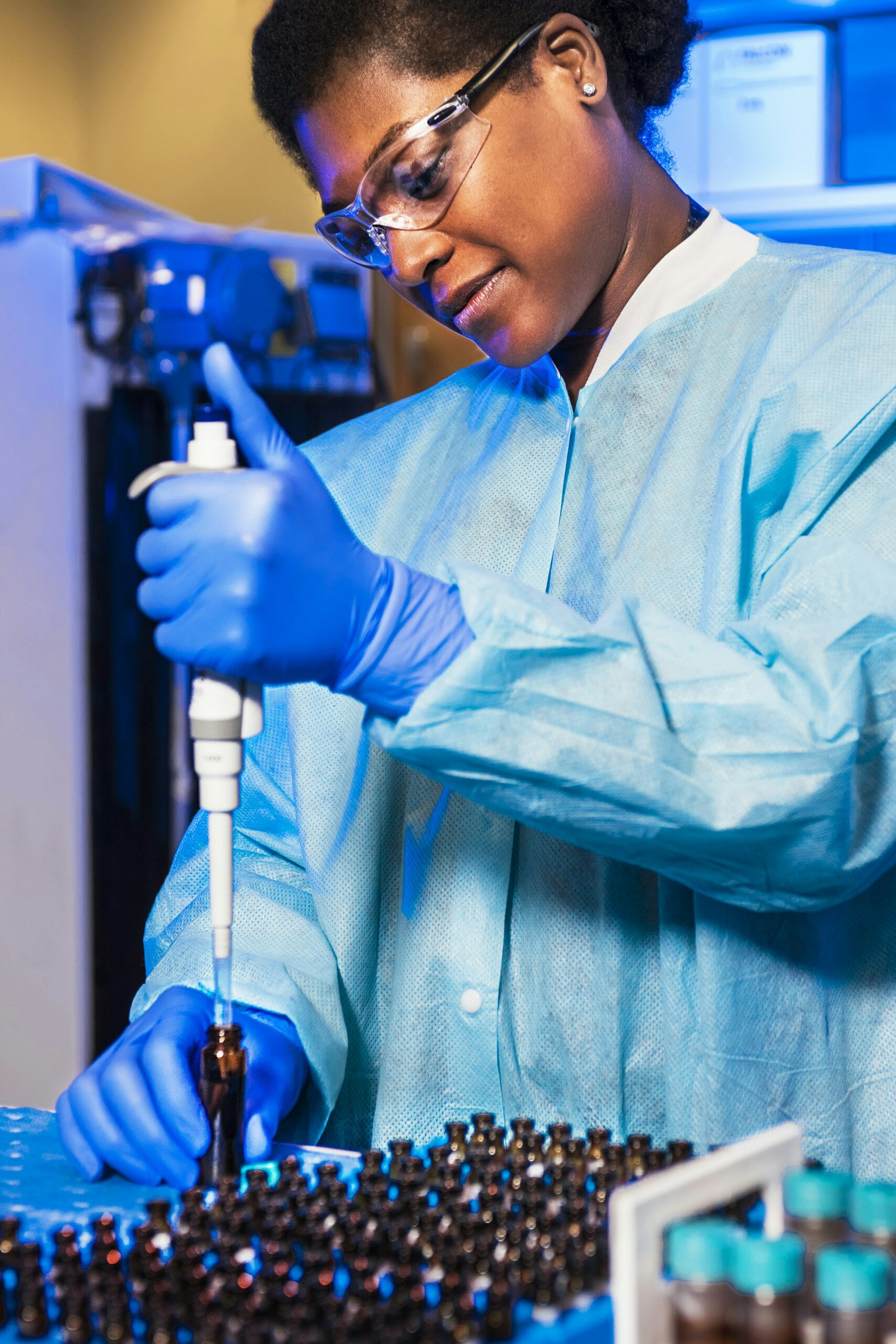Psoriasis is a chronic inflammatory skin disease, characterized by excessive tissue remodeling and immune cell activity. Psoriasis manifests in scaly reddish plaques on frequently chafed body parts, leading to itching and pain, which may severely affect the patient’s quality of life.
Tissue-specific biomarkers, quantifying and monitoring epidermal damage, dermal damage and immune cell activity, provide key advantages when we want to understand the disease mechanisms. Utilizing such biomarkers can help monitor disease activity and predict a therapy with greater reliability of response.








